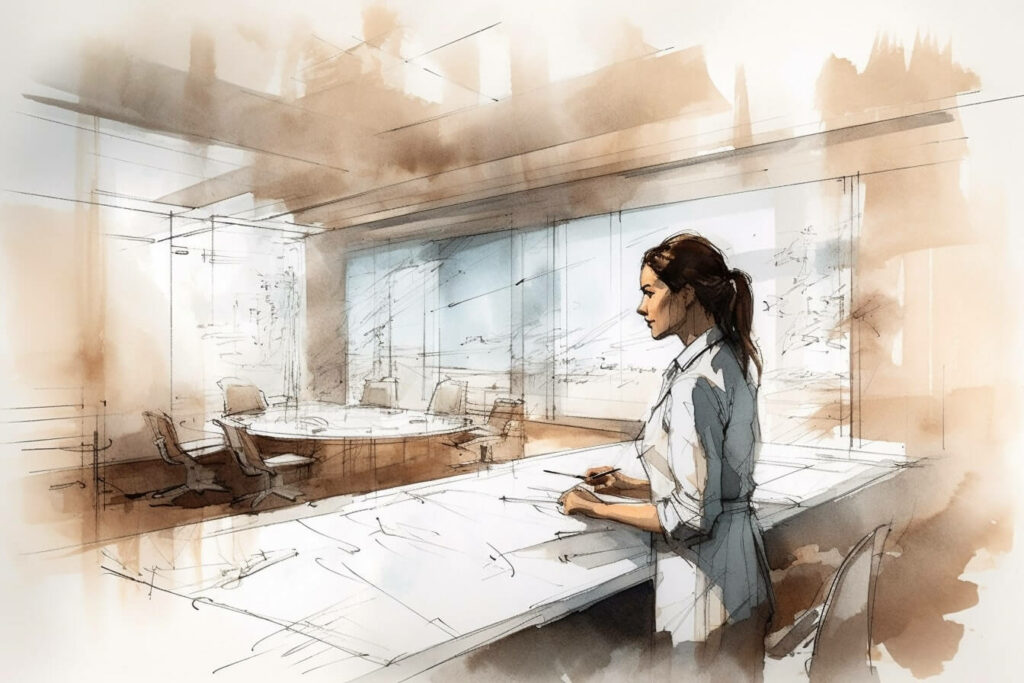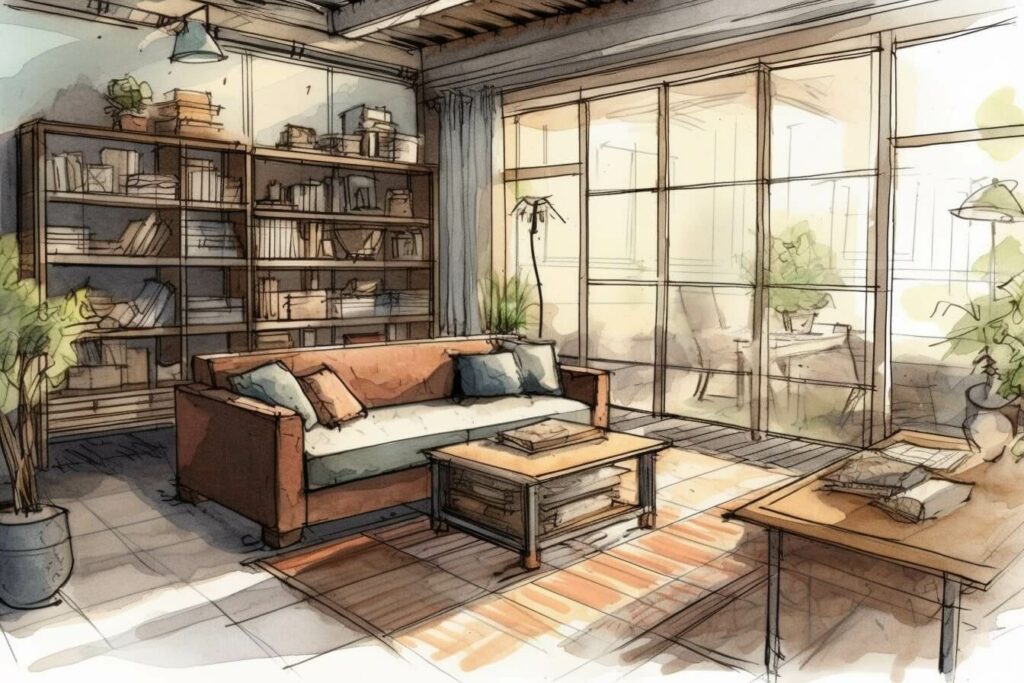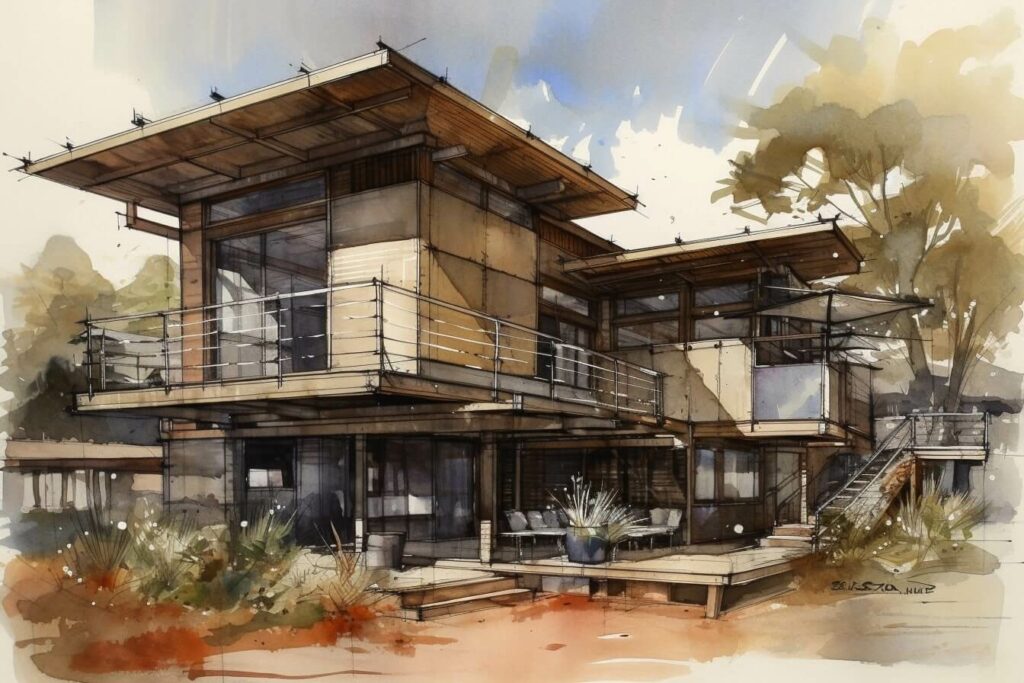Unlock Premium, Members-Only Content
Your source for the most relevant updates in sustainable construction
In today’s rapidly evolving world, architects, interior designers, and construction companies are pivotal in shaping our built environment. As awareness surrounding the environmental impact of our design choices continues to grow, it has become increasingly important for industry professionals to embrace sustainable practices.
One such approach is incorporating circular design principles into various aspects of design and construction. These principles not only minimize environmental impact but also enhance the longevity and adaptability of our creations.
This article will explore the closed-loop design concept’s importance and relevance in architecture, interior design, and construction. By providing a comprehensive guide on integrating circular design principles into your projects, we aim to equip you with the knowledge and tools necessary to contribute to a more sustainable and resource-efficient future.
This journey will cover essential principles, practical applications, and inspiring examples of circular design in action, all to spark your curiosity and empower you to make a lasting impact on the world we inhabit.

What is Circular Design?
The circular design is a holistic approach that minimizes waste generation and maximizes resource utilization in designing, producing, and consuming various products and services.
Rooted in the principles of nature, the circular design draws inspiration from natural ecosystems, where waste is continuously repurposed or transformed into valuable resources, forming a closed-loop system.
The Importance of Circular Design
The importance of circular design cannot be overstated, as it addresses numerous pressing environmental and economic challenges. By adopting closed-loop design principles, we can significantly reduce the environmental impact of our work, making it more sustainable and eco-friendly. This design philosophy also fosters resource efficiency, ensuring we maximize the materials and energy at our disposal.
Moreover, the circular design contributes to a regenerative economy, emphasizing the need to preserve and restore our planet’s resources for future generations. In this way, the closed-loop design promotes long-term resilience and adaptability, enabling us to develop innovative solutions that fulfill the needs of the present without jeopardizing the prospects of future generations.
In essence, circular design is a crucial element in the transition toward a more sustainable world, requiring us to rethink traditional linear models of production and consumption. By embracing circular design principles, we can transform our industries, minimize our environmental footprint, and ensure a prosperous and thriving future for generations.
Circular Design Principles
The foundation of closed-loop design is built upon several key principles that guide its implementation in various industries:
- Reduce waste and pollution: One of the primary goals of circular design is to minimize waste generation and pollution. This can be achieved by designing products and processes that are more efficient, consume fewer resources, and generate less waste throughout their lifecycle. Reducing waste and pollution can significantly lessen our environmental impact and contribute to a cleaner, healthier planet.
- Optimize resources: Circular design encourages maximizing resource value by using materials and energy efficiently and effectively. This principle requires considering the entire lifecycle of a product or service, from extraction and production to consumption and disposal, ensuring that resources are utilized to their fullest potential and minimizing waste.
- Extend product life: Designing durable, easy-to-maintain, and repair products is a crucial aspect of circular design. By extending the lifespan of products, we reduce the need for constant replacement, thereby diminishing waste generation and conserving valuable resources.
- Design for disassembly: To facilitate the efficient reuse or recycling of materials, the closed-loop design encourages the creation of products that can be easily taken apart. By designing products for disassembly, we enable their components to be repurposed or recycled, further reducing waste and promoting a closed-loop system.
- Rethink business models: Innovative business models promoting circularity are essential for adopting closed-loop design principles. Examples include product-as-a-service or sharing economy models, which encourage resource sharing and minimize waste through collaborative consumption.
- Foster collaboration: Collaboration among various stakeholders, including designers, manufacturers, suppliers, and consumers, is vital for the development and implementation of circular solutions. We can share knowledge, pool resources, and create innovative solutions that advance the circular economy by fostering a collaborative environment.
By embracing these six core principles, we can effectively integrate circular design into our work, paving the way for a more sustainable, resource-efficient future.
Unlock Premium, Members-Only Content
Your source for the most relevant updates in sustainable construction
Circular Design in Architecture
Implementing circular design principles in architecture requires careful consideration of both materials and building design to create sustainable, resource-efficient, and adaptable structures.
Materials selection
Selecting the right materials is essential for incorporating circular design in architecture. Consider the following when choosing materials for your projects:
- Opt for sustainable, recyclable, or reusable materials with a lower environmental impact throughout their lifecycle.
- Research the environmental footprint of each material, including its extraction, production, and disposal processes.
- Prioritize materials with eco-friendly certifications, such as Cradle to Cradle or FSC, which ensure responsible sourcing and production practices.
By choosing materials that align with circular design principles, you can create structures that minimize waste and promote resource efficiency.
Building design
Building design plays a critical role in implementing the circular design in architecture. Focus on the following aspects to create sustainable and adaptable buildings:
- Energy efficiency: Design buildings that consume less energy by incorporating passive design strategies, such as proper insulation, natural ventilation, and solar orientation. Additionally, consider integrating renewable energy systems, like solar panels or wind turbines, to reduce dependency on non-renewable resources.
- Natural light: Maximize using natural light by strategically placing windows, skylights, and light shelves. This reduces energy consumption and enhances occupants’ well-being and comfort.
- Proper ventilation: Ensure adequate ventilation in your building design to improve indoor air quality and reduce the reliance on energy-intensive HVAC systems.
- Adaptability and flexibility: Create spaces that can be easily adapted or repurposed to extend their lifespan and meet changing needs. This could involve designing modular or open-plan layouts for easy reconfiguration or incorporating movable partitions and walls.
By considering these aspects in your architectural projects, you can create buildings that embody circular design principles, resulting in more sustainable, efficient, and adaptable structures for the future.
Circular Design in Interior Design
Incorporating circular design principles in interior design involves creating adaptable spaces, selecting modular furniture, and using sustainable materials that minimize environmental impact and promote resource efficiency.
Flexible spaces
Designing flexible spaces is essential for integrating circular design in interior design. Consider the following strategies to create adaptable environments:
- Opt for open-plan layouts that can easily be reconfigured to accommodate changing needs and functions, reducing the need for extensive renovations.
- Incorporate movable walls or partitions to create temporary divisions, allowing for creating of new spaces or expanding existing ones as needed.
- Design multi-functional spaces that can serve various purposes, such as a home office that can also function as a guest room, maximizing available space and minimizing resource consumption.
By creating flexible spaces, you can easily reduce the need for constant renovations and adapt to changing requirements.

Modular furniture
Selecting modular furniture is another crucial aspect of incorporating circular design principles in interior design. Consider these tips when choosing furniture:
- Opt for furniture pieces that can be easily reconfigured, allowing for customization and adaptation to different spaces and needs.
- Choose furniture designed for easy repair or updates, ensuring that individual components can be replaced or updated without discarding the entire piece.
- Prioritize furniture that can be disassembled, facilitating transportation and reducing the likelihood of damage during relocation, thereby extending its lifespan and reducing waste.
By selecting modular furniture, you can create adaptable interiors that cater to evolving needs and reduce waste generation.
Sustainable materials
Incorporating sustainable materials into your interior design projects is essential for aligning with circular design principles. Keep the following considerations in mind when selecting materials:
- Choose materials with a low environmental impact, such as those made from recycled or renewable sources, which help to conserve resources and reduce waste.
- Prioritize materials with eco-friendly certifications, like Cradle to Cradle or FSC, ensuring responsible sourcing and production practices.
- Opt for durable and low-maintenance, long-lasting materials, reducing the need for frequent replacement and minimizing waste generation.
By selecting sustainable materials, you can create interior designs that minimize environmental impact and contribute to a more resource-efficient future.
Circular Design in Construction
Incorporating circular design principles in the construction industry involves reducing on-site waste and employing prefabrication techniques to create more efficient, sustainable projects.
On-site waste reduction
Effective waste management is essential for integrating circular design in construction. Consider the following strategies to reduce waste on construction sites:
- Proper material handling: Implement processes for efficiently handling and storing materials to minimize damage and waste. This includes ensuring materials are protected from the elements, properly stacked, and organized to prevent unnecessary waste.
- Recycling: Establish a recycling program on-site to segregate and recycle construction waste, such as concrete, wood, metal, and cardboard. This not only reduces waste sent to landfills but also promotes resource efficiency.
- Reusing materials: Encourage the reuse of materials whenever possible, either within the same project or in future projects. By reusing materials, you can conserve resources and minimize waste generation.
By implementing these waste reduction strategies, you can create more sustainable construction projects that align with circular design principles.

Prefabrication
Prefabrication is another crucial aspect of incorporating circular design in construction. Utilizing prefabrication techniques offers several benefits:
- Minimized waste: Prefabricated components are produced off-site in controlled environments, resulting in less waste generation than traditional on-site construction methods. The precision of prefabrication allows for better material optimization and reduces the likelihood of errors that lead to waste.
- Increased efficiency: Prefabrication enables faster construction timelines, as components can be produced concurrently with site preparation and foundation work. This reduces overall project duration and minimizes the environmental impact associated with construction activities.
- Enhanced quality control: Off-site production of prefabricated components ensures better quality control, resulting in more durable and resilient structures. This, in turn, leads to longer-lasting buildings that require less maintenance and repair, further reducing waste and resource consumption.
By embracing prefabrication techniques in construction, you can create projects that are more sustainable, efficient, and aligned with circular design principles.
Case Studies in Circular Design
To better understand the practical application of circular design principles, let’s explore some real-world examples in architecture, interior design, and construction:
Architectural example
The Circular Building by Arup in London is an excellent example of circular design principles in action within architecture. This prototype building is constructed using sustainably sourced materials and designed for easy disassembly.
As a result, its components can be readily reused or recycled at the end of the building’s life, minimizing waste and promoting resource efficiency.
Interior design example
Google’s headquarters in Mountain View, California, exemplifies a circular approach to interior design. The office spaces are designed to be flexible and modular, allowing for easy adaptation to changing needs.
Additionally, the interiors feature sustainable materials and furniture that can be quickly reconfigured, ensuring that resources are used efficiently and promoting a closed-loop system.
Construction example
The Brock Environmental Center in Virginia Beach, USA, is an example of incorporating circular design principles in construction. The building’s construction process involved using salvaged materials, such as wood from dismantled structures and recycled bricks, reducing the demand for new resources.
Moreover, the project prioritized minimizing construction waste by implementing efficient processes and waste management strategies, aligning with closed-loop design principles.
These case studies demonstrate the practical application and benefits of integrating circular design principles across various disciplines, showcasing how they can contribute to a more sustainable, resource-efficient future.
Unlock Premium, Members-Only Content
Your source for the most relevant updates in sustainable construction
Circular design: Conclusion
Embracing circular design principles in architecture, interior design, and construction is vital for fostering a more sustainable future. By concentrating on waste reduction, resource optimization, and extending the lifespan of products and structures, we can significantly reduce our environmental impact and contribute to a regenerative, circular economy.
For architects, interior designers, and construction companies, it’s crucial to collaborate and make circular design a central aspect of their work. By sharing knowledge, resources, and innovative solutions, professionals in these fields can drive positive change and create lasting, sustainable outcomes for our built environment.
As we continue to face growing environmental challenges, adopting circular design principles across these disciplines is not just an option but a necessity. Our architects, interior designers, and construction professionals are responsible for leading the way in creating a sustainable, resource-efficient world for future generations.
Circular design: FAQs
What is the main goal of circular design?
The primary goal of closed-loop design is to minimize waste and maximize resource efficiency by designing sustainable, adaptable, and regenerative products, services, and processes, thereby reducing environmental impact and promoting a circular economy.
Can circular design save costs for businesses?
Yes, circular design can lead to cost savings for businesses by reducing material consumption, extending product life, and promoting the efficient use of resources. These savings can result from decreased waste disposal costs, reduced need for raw materials, and lower maintenance and replacement expenses.
How can I assess the environmental impact of materials in my projects?
To assess the environmental impact of materials in your projects, research the materials’ lifecycle, production processes, and end-of-life disposal. Consider certifications like LEED, Cradle to Cradle, or FSC to help evaluate their environmental impact and ensure responsible sourcing and production practices.
What is the role of collaboration in circular design?
Collaboration plays a vital role in a circular design. It is essential for stakeholders, including architects, designers, constructors, and suppliers, to collaborate to develop and implement circular solutions, share knowledge, and foster innovation. Professionals across various disciplines can create synergies and drive positive change toward a more sustainable, circular economy through collaboration.
What are some barriers to implementing the circular design in the industry?
Some barriers to implementing the circular design in the industry include a lack of awareness and understanding of the concept, resistance to change, limited access to sustainable materials, and the need for new business models that support circularity. Overcoming these barriers requires education, collaboration, and innovation from all stakeholders involved in our built environment’s design, construction, and operation.
Unlock Premium, Members-Only Content
Your source for the most relevant updates in sustainable construction
If you need our services in the Portuguese language, click here.